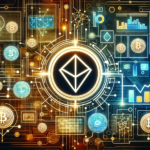What is Machine Learning in Trading?
Machine learning (ML) in trading refers to the use of algorithms that learn from historical data to make predictions about future market behaviors. Unlike traditional trading strategies that rely on rigid rules and parameters, ML algorithms adapt and evolve as they are exposed to new data. This adaptability enhances a trader’s ability to make informed decisions based on patterns and trends that might not be evident through conventional analysis.
Types of Machine Learning Algorithms
When it comes to trading, machine learning algorithms can generally be categorized into three primary types: supervised learning, unsupervised learning, and reinforcement learning. Each type has its unique advantages and applications.
Supervised Learning
Supervised learning involves training a model on a labeled dataset, meaning that the algorithm learns from input-output pairs. In trading, this could involve using historical stock prices and corresponding future prices to predict stock movements.
Common Algorithms
– **Linear Regression**: A simple approach that models the relationship between a dependent variable and one or more independent variables. It’s often used for predicting stock prices based on historical data.
– **Decision Trees**: These algorithms split data into branches to make predictions. They can be particularly useful for classifying whether to buy, sell, or hold a stock based on various features.
– **Support Vector Machines (SVM)**: SVMs are effective for binary classification tasks, such as predicting whether a stock will go up or down.
Unsupervised Learning
Unsupervised learning deals with input data that does not have labeled responses. Instead, the algorithm looks for hidden patterns or intrinsic structures in the input data. This type of learning is particularly beneficial for clustering and anomaly detection.
Common Algorithms
– **K-Means Clustering**: This algorithm partitions data into K distinct clusters, helping traders identify trends and segment different market behaviors.
– **Principal Component Analysis (PCA)**: PCA reduces the dimensionality of large datasets while retaining most of the variance. It’s useful for identifying the main factors affecting stock prices.
Reinforcement Learning
Reinforcement learning (RL) is an area of machine learning concerned with how agents ought to take actions in an environment to maximize cumulative reward. In trading, this can emulate the trial-and-error approach of a trader navigating volatile markets.
Applications in Trading
Using RL, algorithms can learn the best trading strategies by continuously interacting with the market environment. They adapt strategies based on past actions and their outcomes, honing their performance over time.
Data Inputs for Machine Learning Models
Data is the backbone of machine learning algorithms. In trading, various data types contribute to the effectiveness of machine learning models.
Market Data
Market data includes historical prices, trading volumes, and market capitalization. This data is critical for developing any ML-based trading strategies, as it contains the patterns and trends that algorithms learn from.
Alternative Data
Alternative data sources like social media sentiment, news articles, and economic reports can also be invaluable. These datasets often provide insights that aren’t reflected in traditional market data and can be used to forecast market trends.
Challenges in Applying Machine Learning to Trading
While machine learning holds great promise for trading, it does have some challenges.
Overfitting
One significant issue in machine learning is overfitting. This occurs when a model learns noise and details from the training data to an extent that it negatively impacts its performance on new data. In trading, an overfitted model may make excellent predictions on historical data but fail in real-time trading scenarios.
Market Volatility
Markets are inherently volatile and can change due to numerous factors like geopolitical events, economic shifts, or technological advancements. Machine learning models trained on historical data may struggle to adapt to sudden market changes or structural breaks.
Data Quality and Preparation
Good quality data is essential for training effective machine learning algorithms. However, financial data can often be noisy, incomplete, or inconsistent. Proper data preprocessing and cleaning are crucial steps before training a model to ensure the results are reliable.
Best Practices for Implementing Machine Learning in Trading
If you’re considering integrating machine learning into your trading strategy, here are some best practices to keep in mind.
Feature Selection and Engineering
Choosing the right features (or attributes) is fundamental to building effective machine learning models. Carefully analyze and engineer features that capture the most relevant information about the market conditions you are interested in.
Model Evaluation
Always evaluate your machine learning models using techniques such as cross-validation and backtesting. Cross-validation helps to ensure that the model’s performance is consistent across different subsets of data. Backtesting allows you to assess how your strategy would have performed in real-world scenarios using historical data.
Continuous Learning and Adaptation
Markets evolve, so your machine learning models should also manage to adapt to new information over time. Implement mechanisms to update your models with new data continuously, allowing them to adjust to changes in market dynamics.
Future Trends in Machine Learning Algorithms for Trading
As technology evolves, the integration of machine learning in trading is poised to become even more sophisticated. Let’s look at some trends that could shape the future.
Increased Use of Natural Language Processing (NLP)
Natural language processing can analyze vast amounts of unstructured data, such as news articles, earnings call transcripts, and social media content. By integrating NLP into trading strategies, traders can gain insights from textual data that can supplement their quantitative analyses.
Enhanced Automation
Automation in trading is already a growing trend, but with machine learning’s advancements, we are likely to see even more automated trading systems that can not only execute trades but also optimize strategies in real time based on incoming data.
Personalized Trading Strategies
As machine learning continues to evolve, we could see the emergence of personalized trading strategies that account for individual trader behaviors, preferences, and risk tolerance. This level of customization could allow users to automate trades based on their unique profiles.
Machine learning offers exciting possibilities for enhancing trading strategies. By understanding the various algorithms, inputs, challenges, and best practices, traders can leverage these advanced technologies to optimize their trading performances and navigate the complexities of financial markets.








